7 Types Of Whales You Can Spot In Monterey Bay
By: Priyanka Maheshwari Wed, 27 Sept 2023 3:50:00
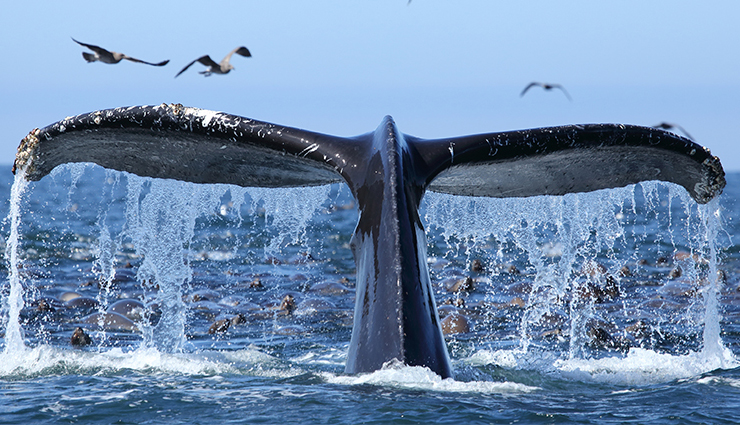
Monterey Bay, located slightly to the south of the bustling San Francisco Bay Area, offers a year-round haven for enthusiasts eager to observe magnificent whales in their natural habitat. Unlike some regions limited to a specific season, Monterey Bay boasts a consistent over 90% probability of whale sightings every month, owing to the convergence of their feeding and migration seasons. Designated as a protected marine sanctuary since 1992, this area teems with a diverse array of marine creatures.
In the forthcoming article, we will embark on a journey to discover the impressive roster of whale species that you may encounter in Monterey Bay. Let's get started!
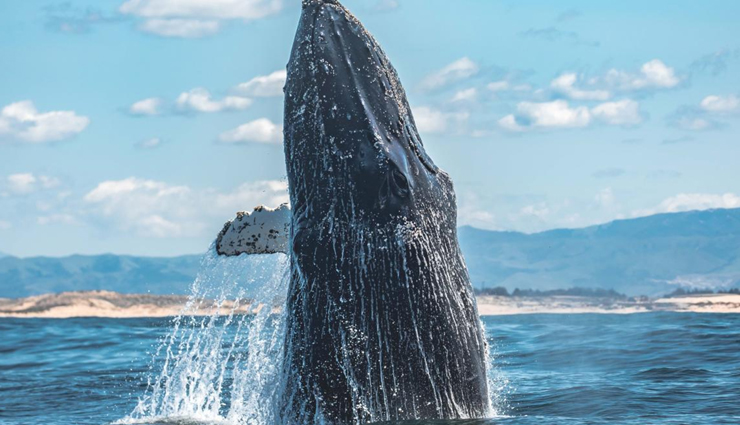
# Blue Whale
Just picture the awe-inspiring sight of encountering the largest creature ever to grace our planet, right here in Monterey Bay! Yes, you read it correctly - it's not unusual to come across blue whales in this region.
Blue whales are renowned for their elongated bodies and sleek physique. When submerged beneath the waves, their blue-gray skin takes on a luminous, light blue tint, hence their name - the blue whale. Intriguingly, these creatures exhibit unique markings that set them apart, akin to the distinctiveness of fingerprints.
These magnificent oceanic giants reign supreme in the world's oceans, boasting astonishing lengths of up to 110 feet and a staggering weight that can surpass 200 tons. It's truly mind-boggling to consider that their tongues can weigh as much as an elephant, while their hearts can tip the scales equivalent to the weight of an automobile!
Despite their colossal size, blue whales primarily subsist on krill, diminutive shrimp-like organisms no larger than a small fingernail. Except for the Arctic, blue whales can be found in all the world's oceans. While they usually undertake migratory journeys between their summer feeding grounds and winter breeding areas, there is data suggesting that certain groups may opt not to migrate at all.
Around 2,200 blue whales have been documented in the vicinity of California. Regrettably, they are classified as an endangered species, with their global population estimated to range from 10,000 to 25,000 individuals. However, the population residing in Californian waters appears to be the healthiest and most substantial among all global populations.
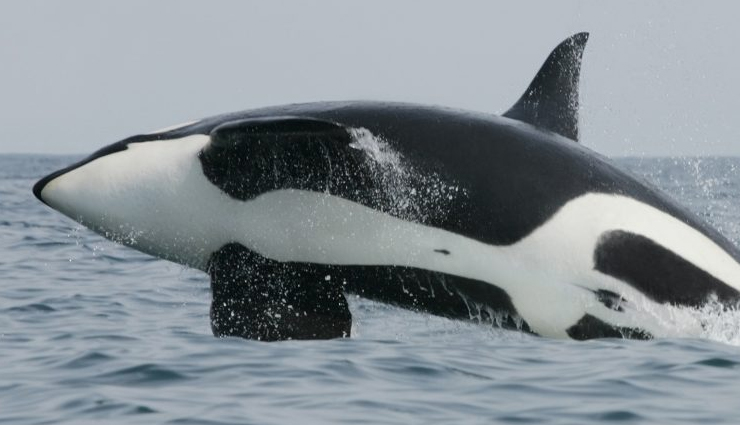
# Killer Whale
Monterey Bay presents a remarkable opportunity to observe three distinct genetic variations of killer whales. These variations include those that primarily hunt mammals (known as the transient type), those with a preference for fish and sharks (referred to as the offshore type), and the group that favors salmon, commonly recognized as the Southern resident killer whales.
Distinguished by their black upper bodies juxtaposed with white undersides and distinctive eye patches, these killer whales also exhibit a gray or white patterned area behind their dorsal fins. It's worth noting that these identifying features can exhibit significant variations among individual whales and different groups.
Mature male killer whales can reach sizes ranging from 20 to 27 feet, with females being slightly smaller in comparison. As apex predators, they not only dine on fish and squid but are also known to target seals, seabirds, and even larger whale species. These formidable creatures have established their presence in every ocean across the globe.
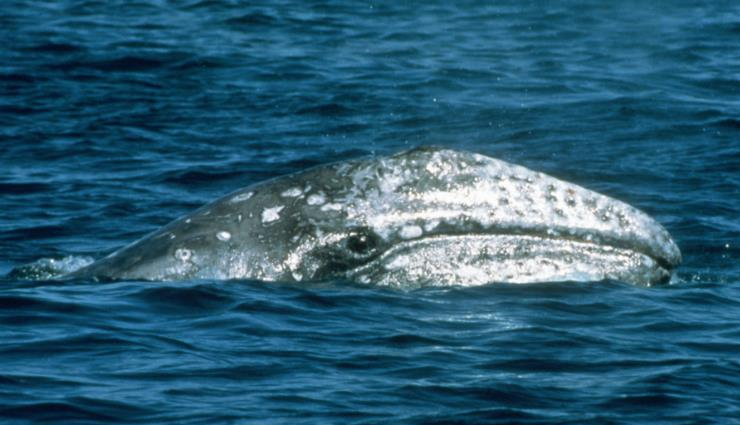
# Gray Whale
Every winter and spring, the entire population of gray whales embarks on a monumental journey as they pass by the shores of Monterey. This remarkable migration spans a distance of more than 12,000 miles, taking them from their summer habitat in the Bering Sea to the warm breeding grounds of Baja California, only to make the return journey once again.
Distinguished by their unique hump and a series of rugged protrusions along their back, replacing the conventional dorsal fin, these gray whales are undeniably a captivating sight. They fall under the category of baleen whales, known for their distinctive feeding mechanism, which involves filtering nourishment from the water through bristle-like structures in their mouths.
With an impressive size that can reach up to 49 feet and a weight of around 90,000 pounds, these colossal creatures are truly a sight to behold. Their diet is remarkably diverse, encompassing various crustaceans such as ghost shrimp and amphipods, along with herring eggs, worms, and various types of larvae.
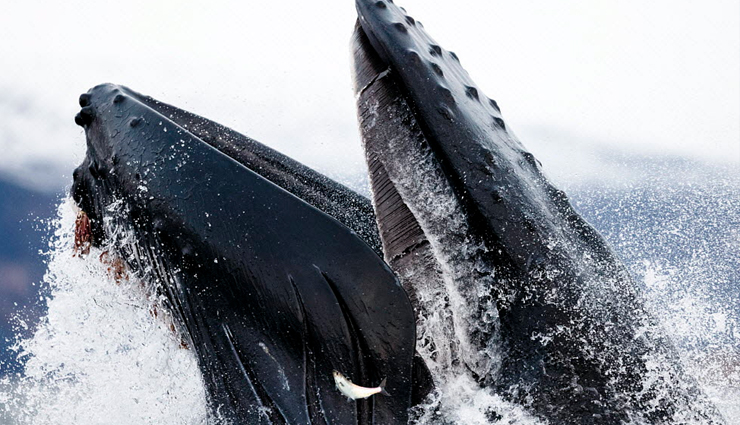
# Humpback Whale
During the spring, summer, and fall seasons, humpback whales depart from their cozy winter breeding grounds near Central America to grace the nutrient-rich waters of Monterey Bay with their presence.
Distinguished by their dark gray or black bodies adorned with white patches on their bellies, under their tail flukes, and on their pectoral fins, these whales exhibit unique black-and-white patterns akin to human fingerprints, making each individual easily distinguishable.
With the capacity to reach lengths of up to 60 feet and weighing approximately 80,000 pounds, humpback whales are formidable carnivorous creatures. They sustain themselves by feasting on a diet that includes krill and various small fish such as haddock, herring, and salmon, inhabiting waters spanning polar to tropical regions.
In Monterey Bay, these whales offer a vibrant exhibition of their feeding techniques, which can involve surface lunge feeding or deep dives in search of concentrated prey groups. Regarded as the most animated members of the baleen whale family, they frequently engage in an array of activities such as breaching, spyhopping, and tail lobbing, providing onlookers with captivating displays of their behavior.
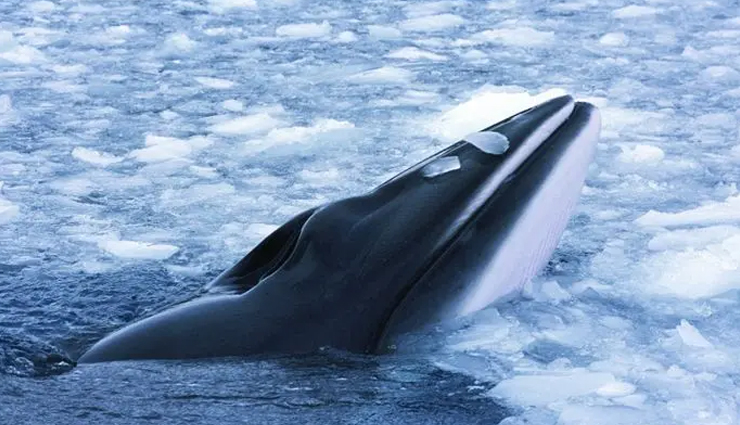
# Minke Whale
Throughout the entire year, Monterey Bay serves as the habitat for the captivating minke whales! These majestic creatures are adorned with a tall, gracefully curved dorsal fin, positioned roughly two-thirds along their back. Their body showcases a dark gray or brownish-black hue, accentuated by a striking light chevron pattern near the head and above the flippers, which creates a beautiful contrast with their white underbelly.
As the smallest among the baleen whales found in North American waters, minke whales typically attain a length of approximately 35 feet, with females slightly larger than their male counterparts.
Minke whales possess a diverse palate, feasting on small crustaceans, plankton, and schools of diminutive fish. While they exhibit a preference for temperate to boreal waters, it's also possible to encounter them in tropical and subtropical regions.
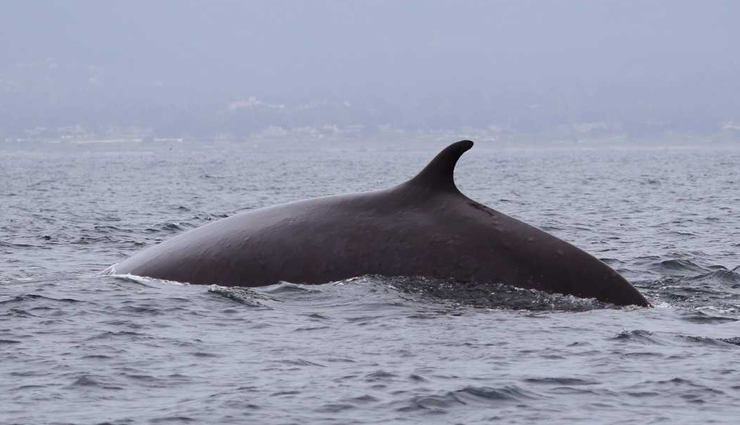
# Fin Whale
While the blue whale often takes center stage in Monterey Bay, you may have the good fortune to witness the equally captivating fin whale, the second-largest species of whale.
These whales exhibit a distinctive coloration, featuring a dark brownish-gray or black back and flanks that sharply contrast with their white underbelly. An intriguing asymmetry in coloration adorns their head, where the left lower jaw appears dark while the right side is white, with this pattern mirrored on their tongue.
Male fin whales typically measure around 70 feet in length and weigh approximately 45 tons. Conversely, females can reach lengths of up to 73 feet and fall within the same weight range. Their dietary preferences primarily revolve around krill, small schooling fish, and squid. Preferring the depths of open waters across all major oceans, they typically gravitate towards temperate to colder regions.
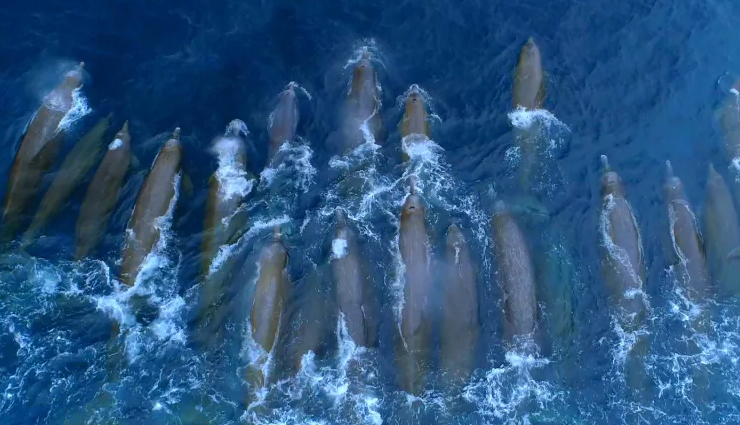
# Baird’s Beaked Whale
Baird's beaked whale is a rare sight in Monterey Bay. These whales possess a robust, elongated, and slender physique, featuring a small, rounded dorsal fin situated approximately two-thirds along their back, which lends them a distinctive appearance.
Within the beaked whale family, Baird's beaked whales hold the title of being the largest. Typically, females reach lengths of up to 36 feet, while males are slightly shorter, measuring around 35 feet.
Their primary dietary preferences encompass deep-sea and pelagic fish like mackerel, sardines, crustaceans, squid, and octopus. They can be found inhabiting the West Coast of the United States, spanning from California to the chilly waters of Alaska.





